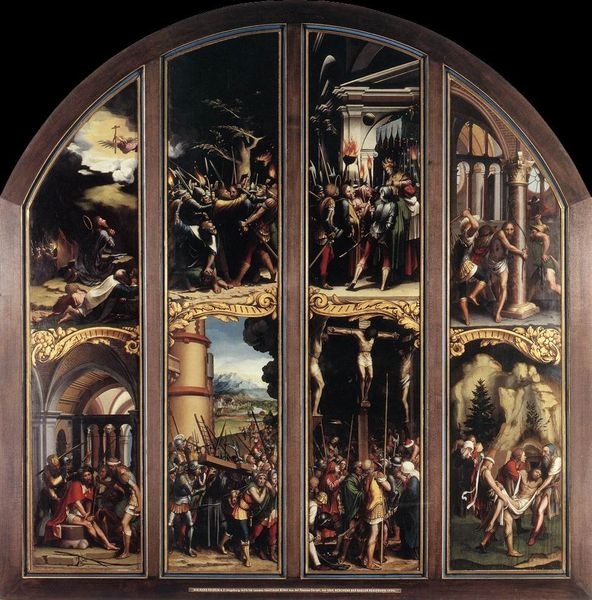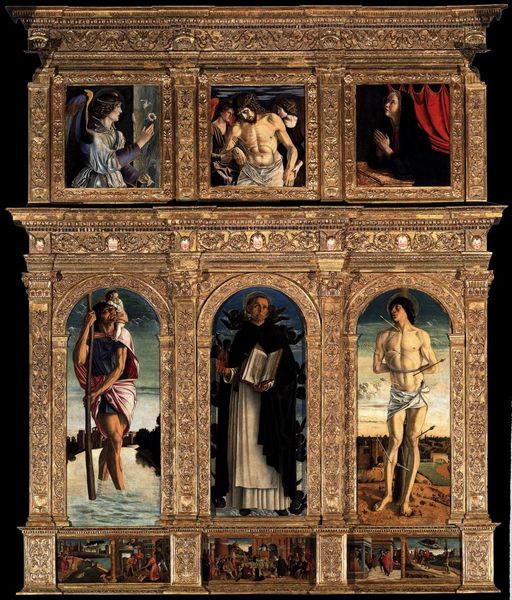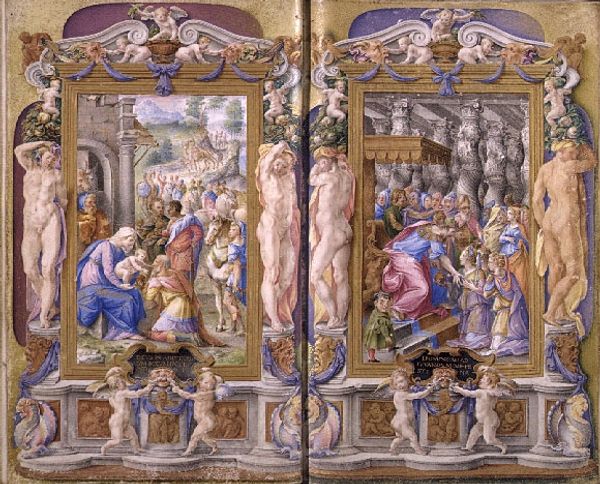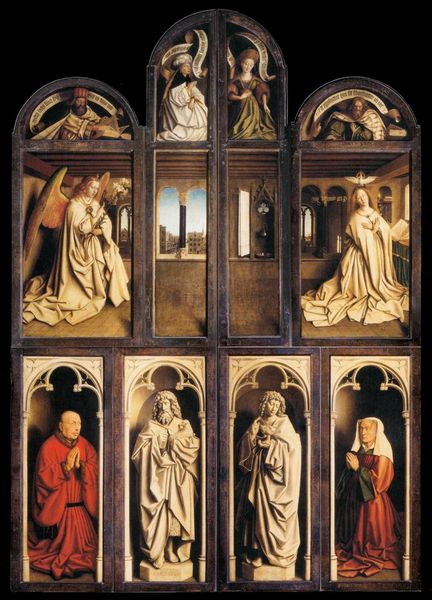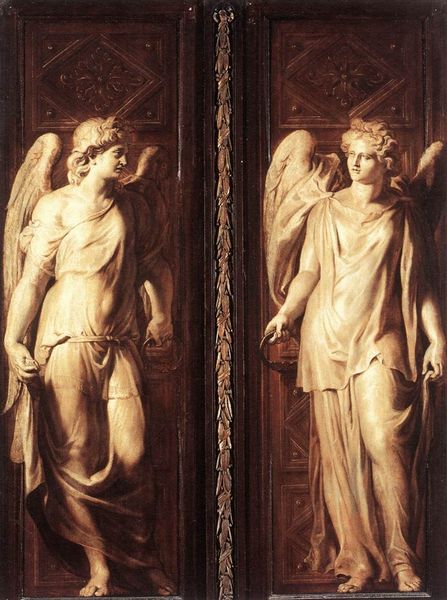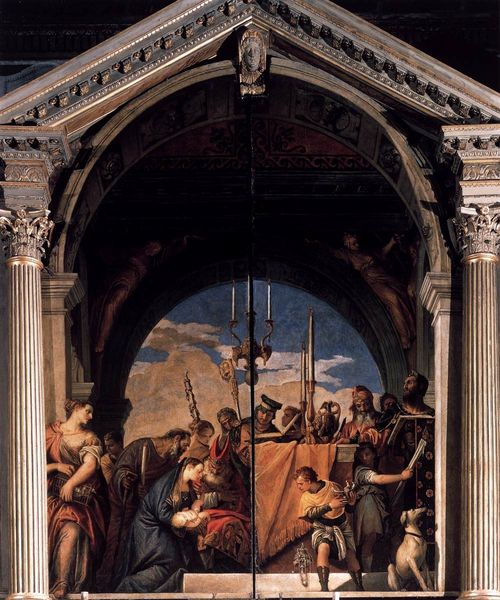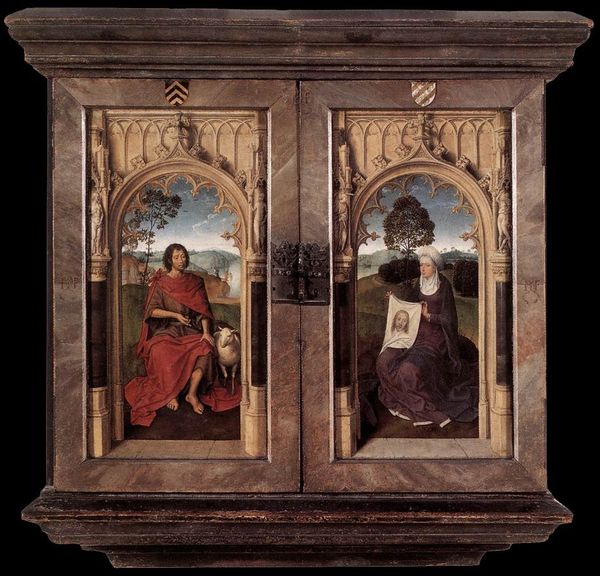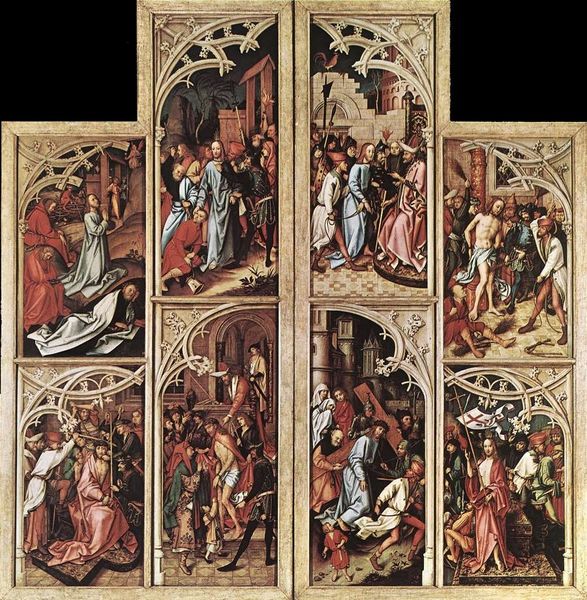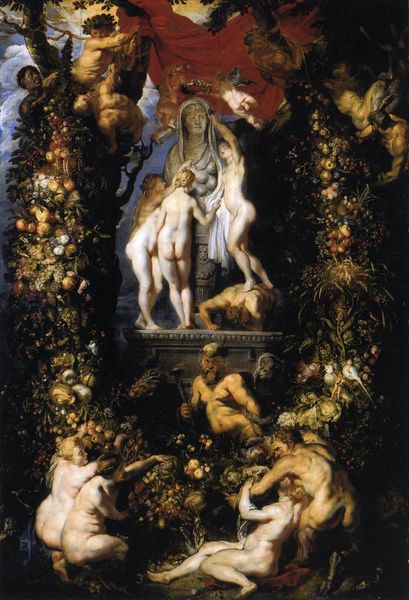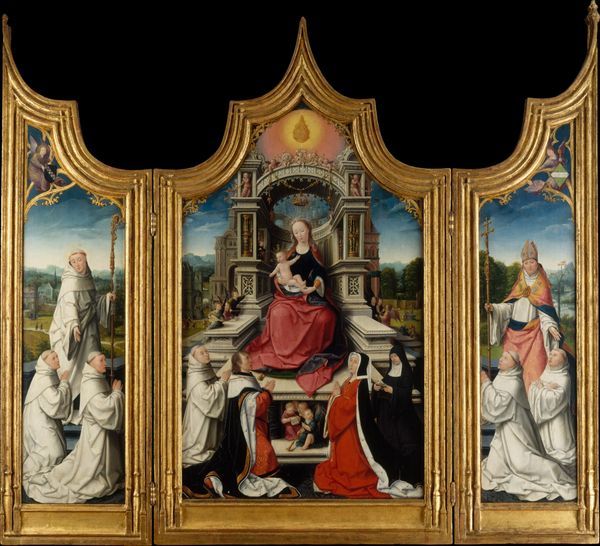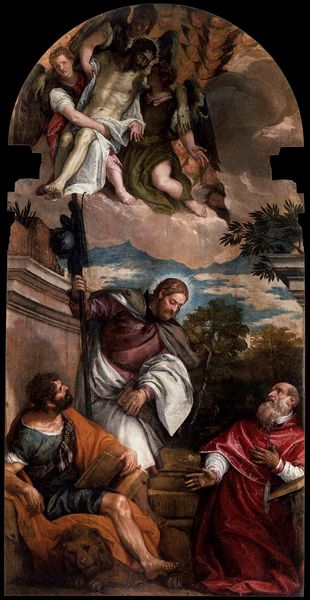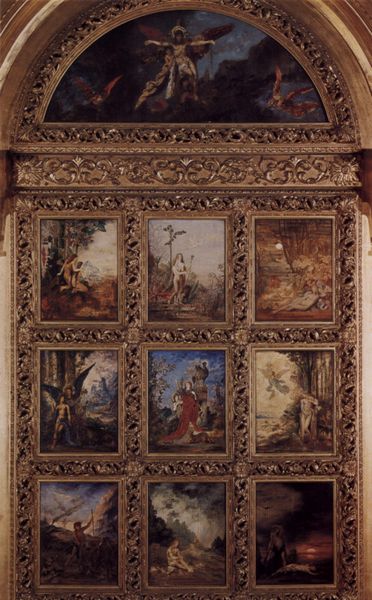
tempera, painting, oil-paint, impasto, mural
#
portrait
#
allegory
#
baroque
#
tempera
#
painting
#
oil-paint
#
figuration
#
impasto
#
christianity
#
history-painting
#
mural
#
miniature
Dimensions: 24 x 37 cm
Copyright: Public domain
Curator: Here we have "Triptych" painted in 1605 by Annibale Carracci, an exemplary piece housed here at the National Gallery of Ancient Art in Rome. It combines tempera and oil-paint and makes a bold statement as a mural with miniature depictions. Editor: Whoa, it’s got this, like, ornate jewelry box vibe but…violent! Like a cherubic ninja on one side and…what is even happening on the other? Definitely not what I expect from an Italian painting from that era. Curator: Well, let's delve a little deeper. This "Triptych" by Carracci embodies quintessential High Baroque ideals and the prevailing sensibilities of Counter-Reformation Rome. Consider the historical context: the Catholic Church, then, was eager to champion itself as the protector and patron of sacred arts. Carracci contributed prominently to that ambition. Editor: True. I see now—it's the battle between good and evil writ small. It looks like Saint Michael trampling a demon, juxtaposed with what, an angel saving a soul from the abyss? Very dramatic for a little thing. And framed as a religious object – not just art for art’s sake. Curator: Exactly. Look closely. The figures, reminiscent of antique sculpture, demonstrate Carracci’s embrace of classicism, which served as the visual vocabulary for religious narrative during the era. The small upper images echo a divine sanction, almost an overview of both earthly battles shown. Editor: Still, it's not entirely serene. The one with Michael, man, is *really* going for it with the sword! Is it supposed to comfort me to think the side that's battling is on "my side"? Maybe that’s it… the Catholic Church battling to save our souls and look glorious at the same time. Baroque propaganda! Curator: Art serving sacred missions; Annibale was tasked with producing inspiring, instructive artworks that could sway public sentiment. “Triptych” offers a glimpse into those dynamics. It uses intense emotion, masterful craft, and an undeniably Baroque sensibility. Editor: OK, now I'm seeing it as both artistic and like a PR stunt from centuries past. Thanks to you, I’ve realized the museum labels only ever scratch the surface.
Comments
No comments
Be the first to comment and join the conversation on the ultimate creative platform.

